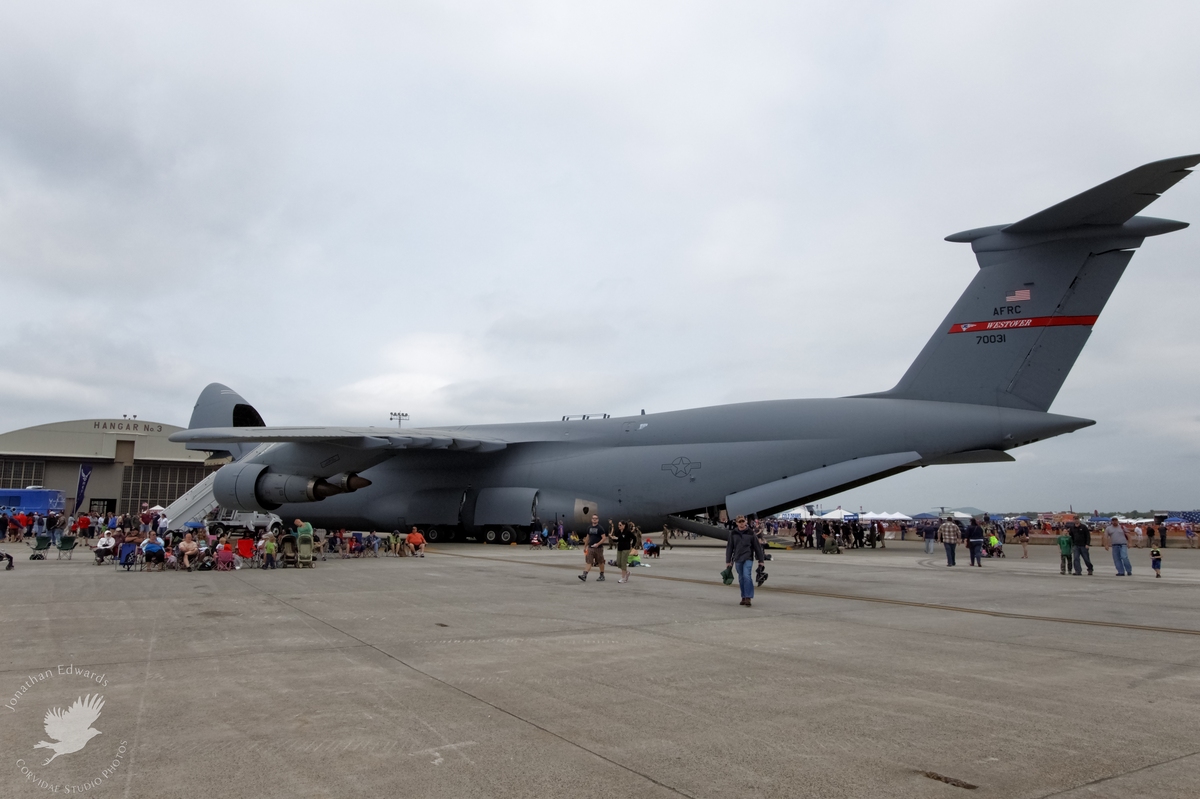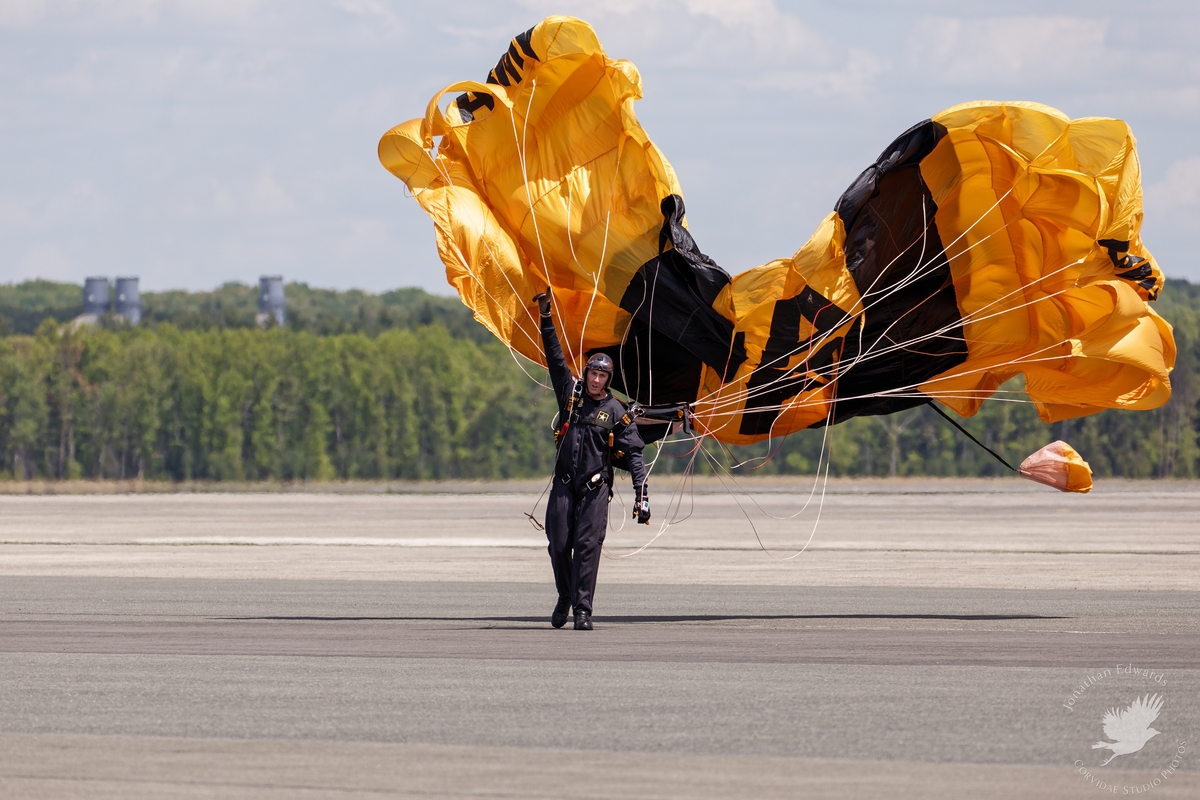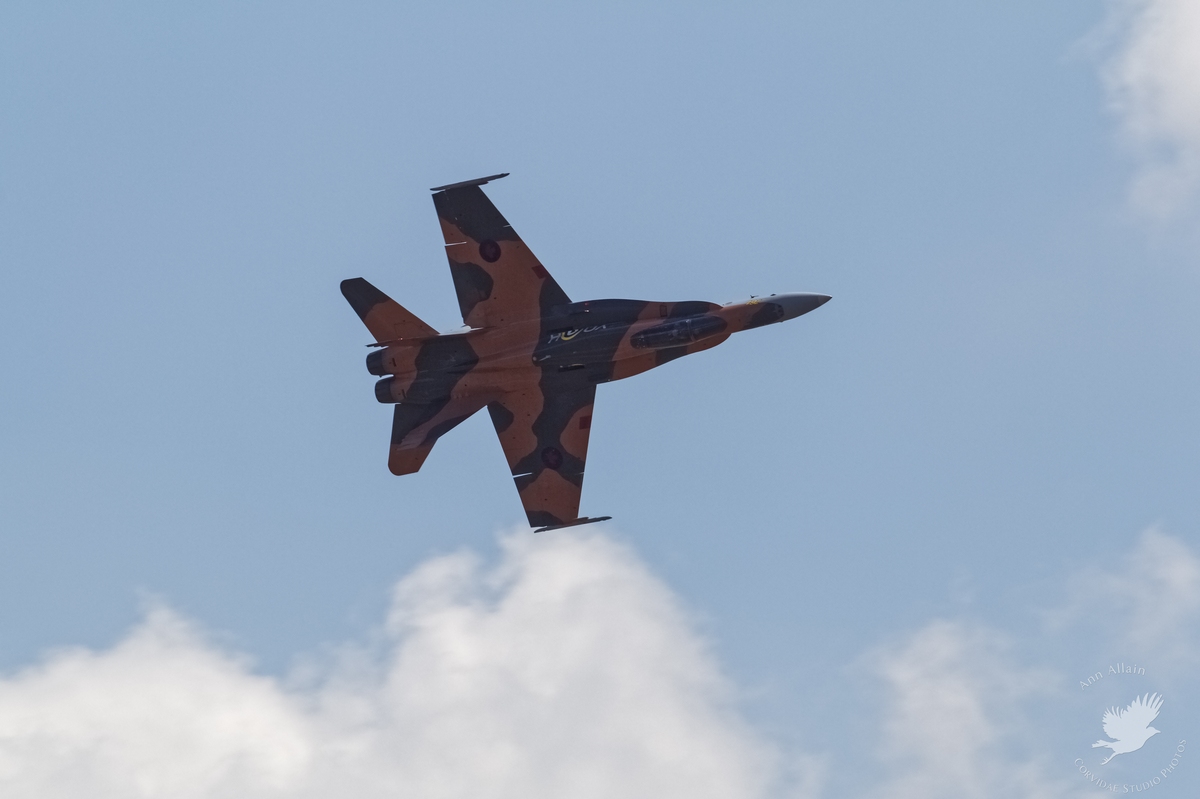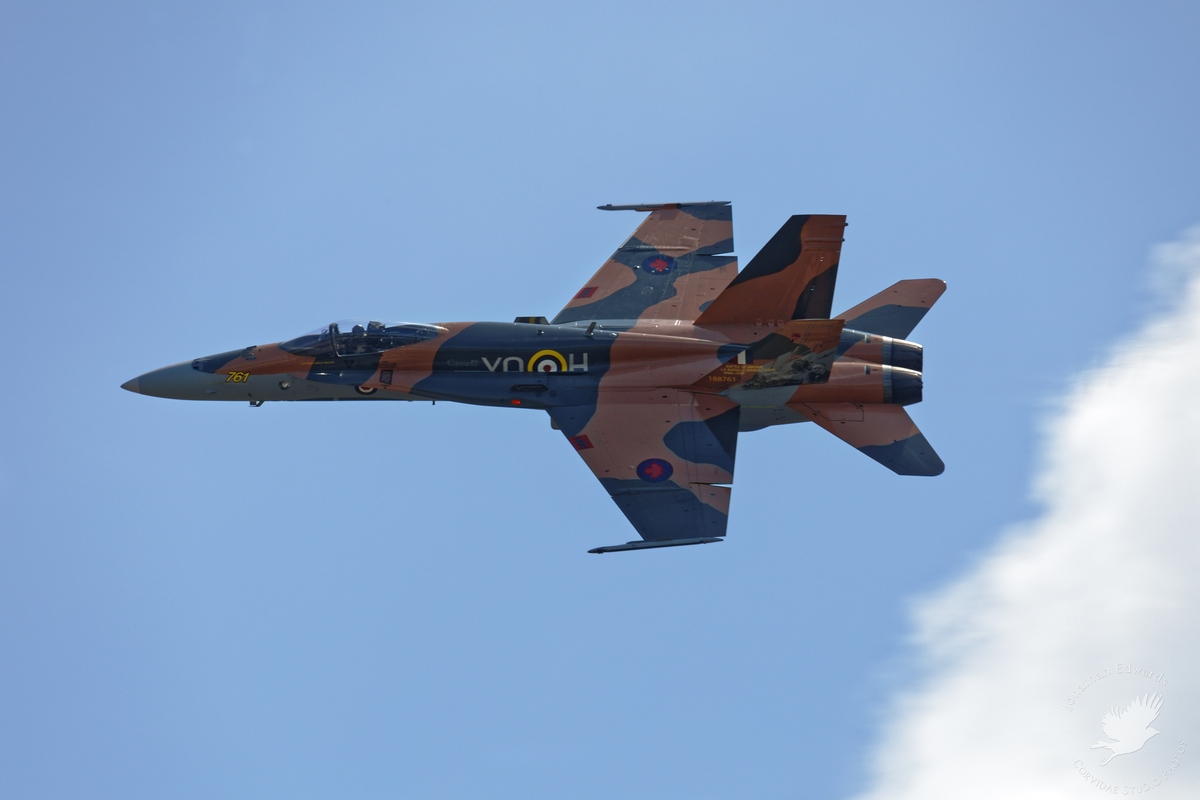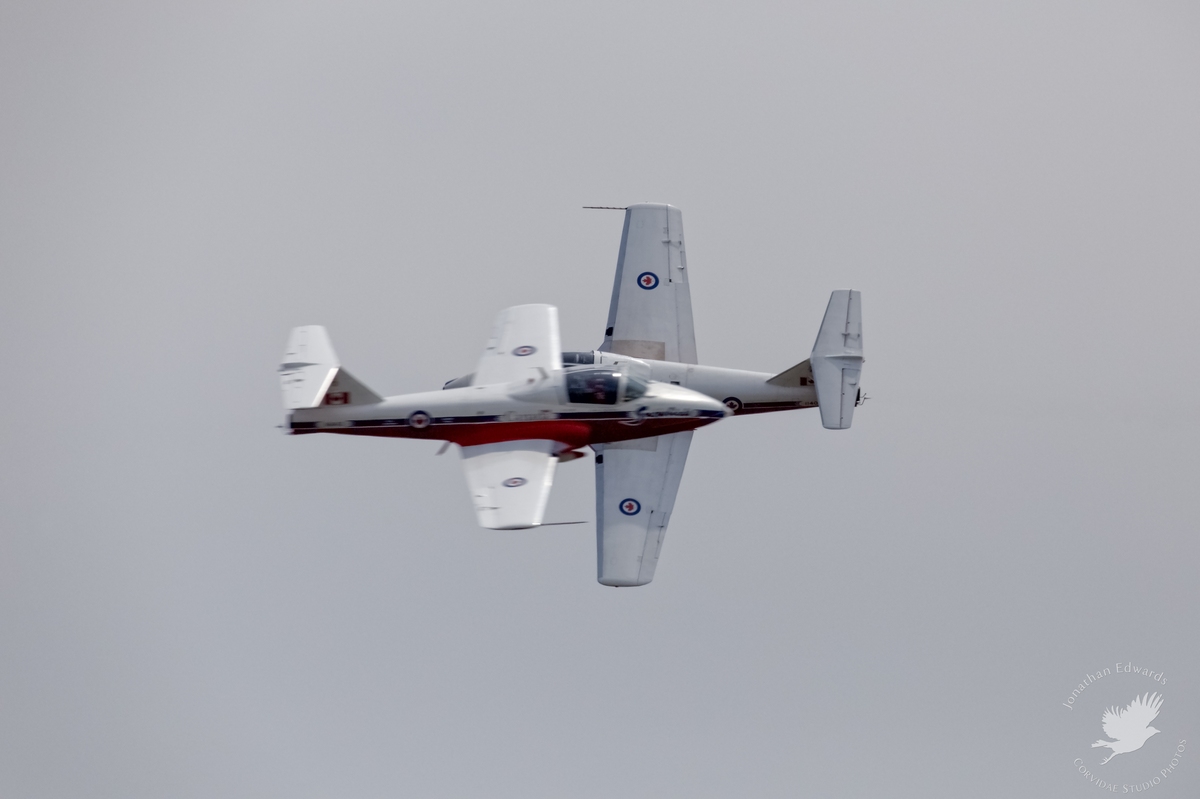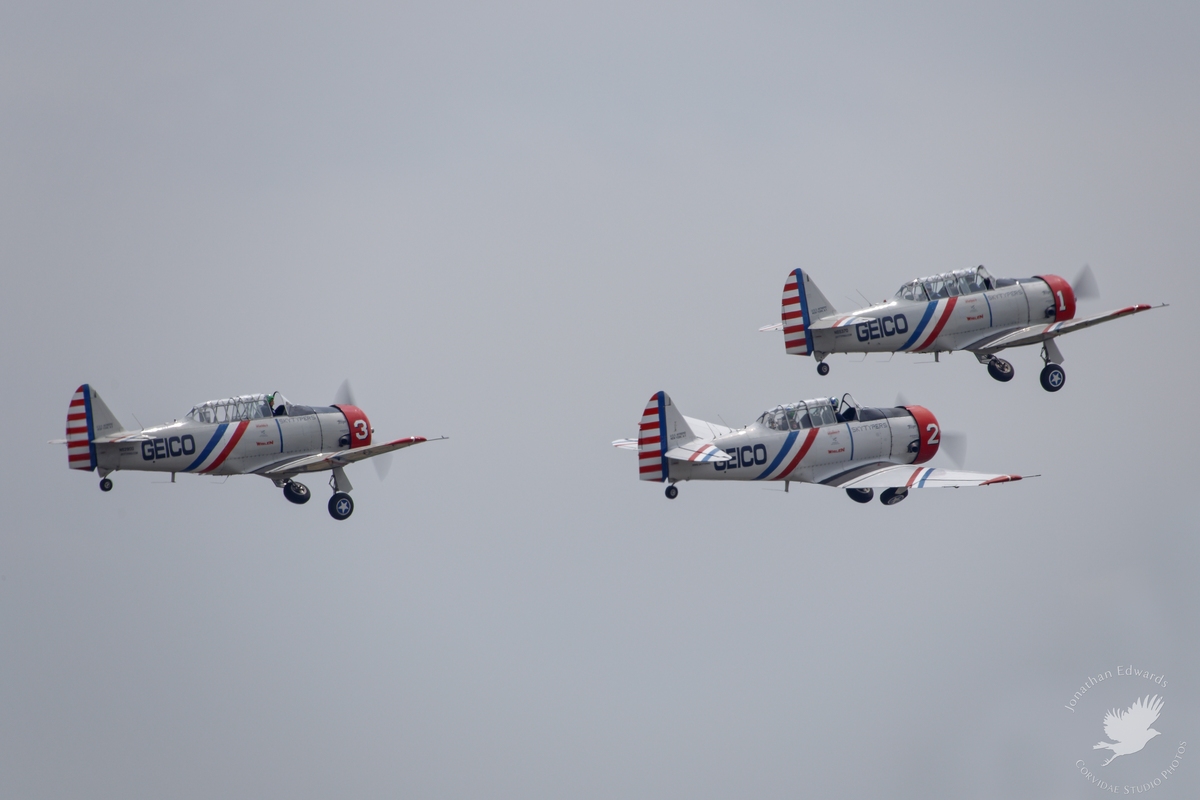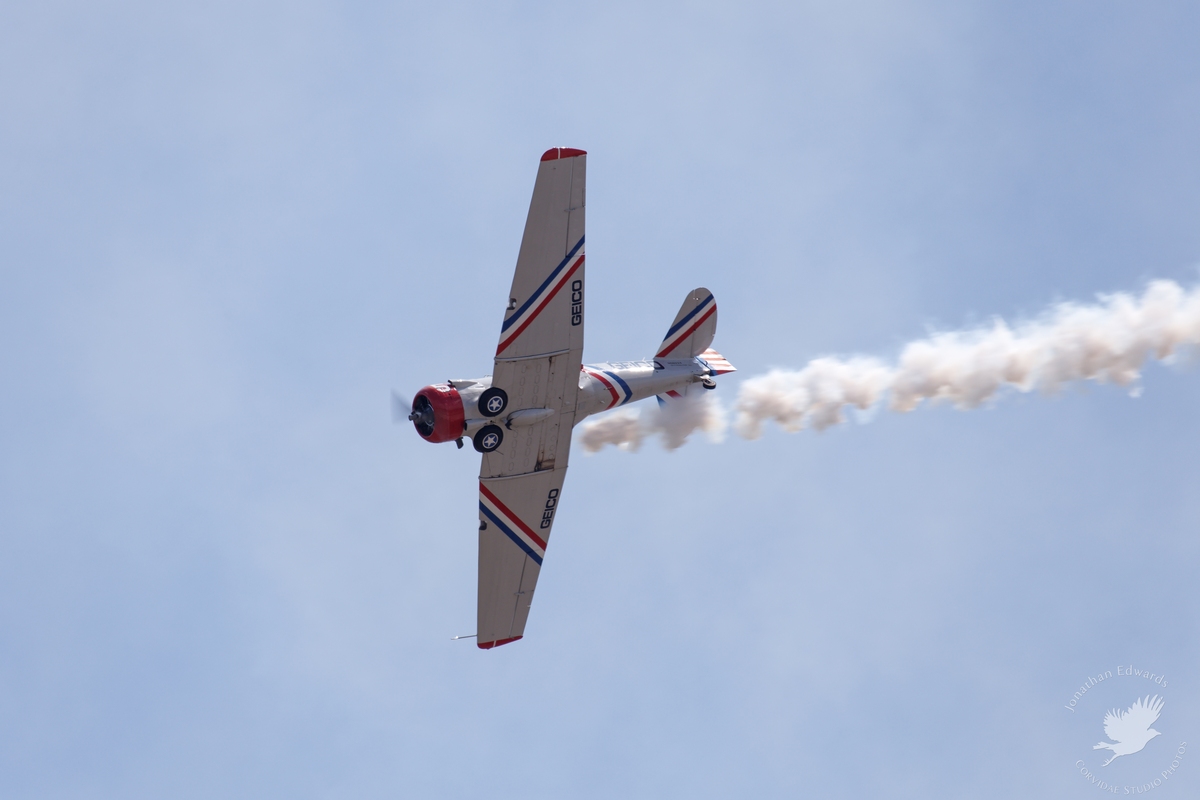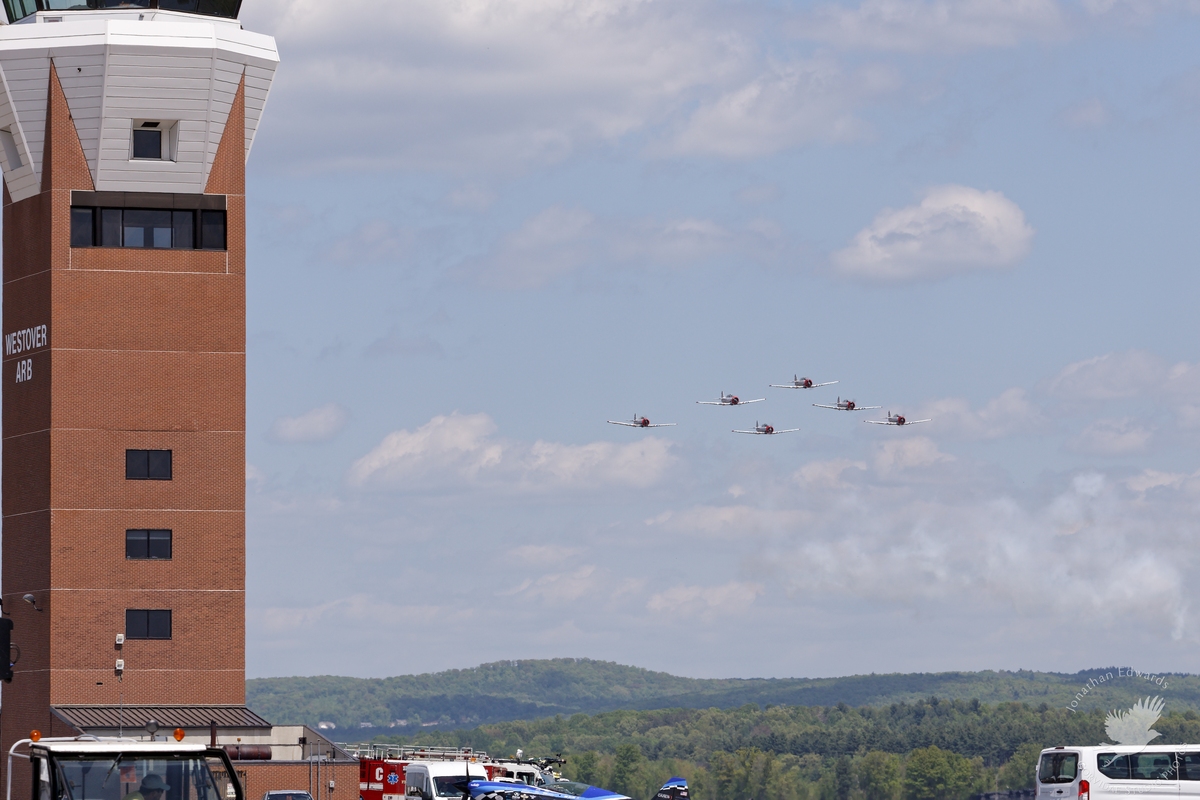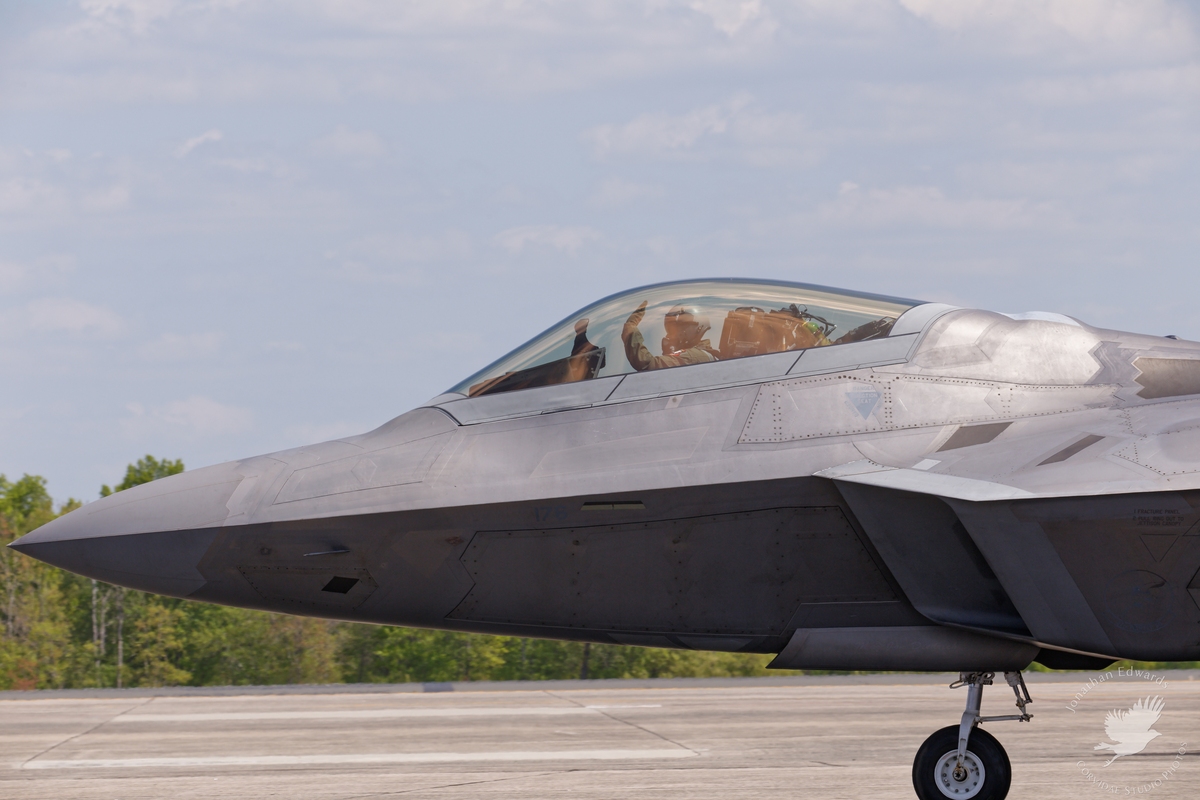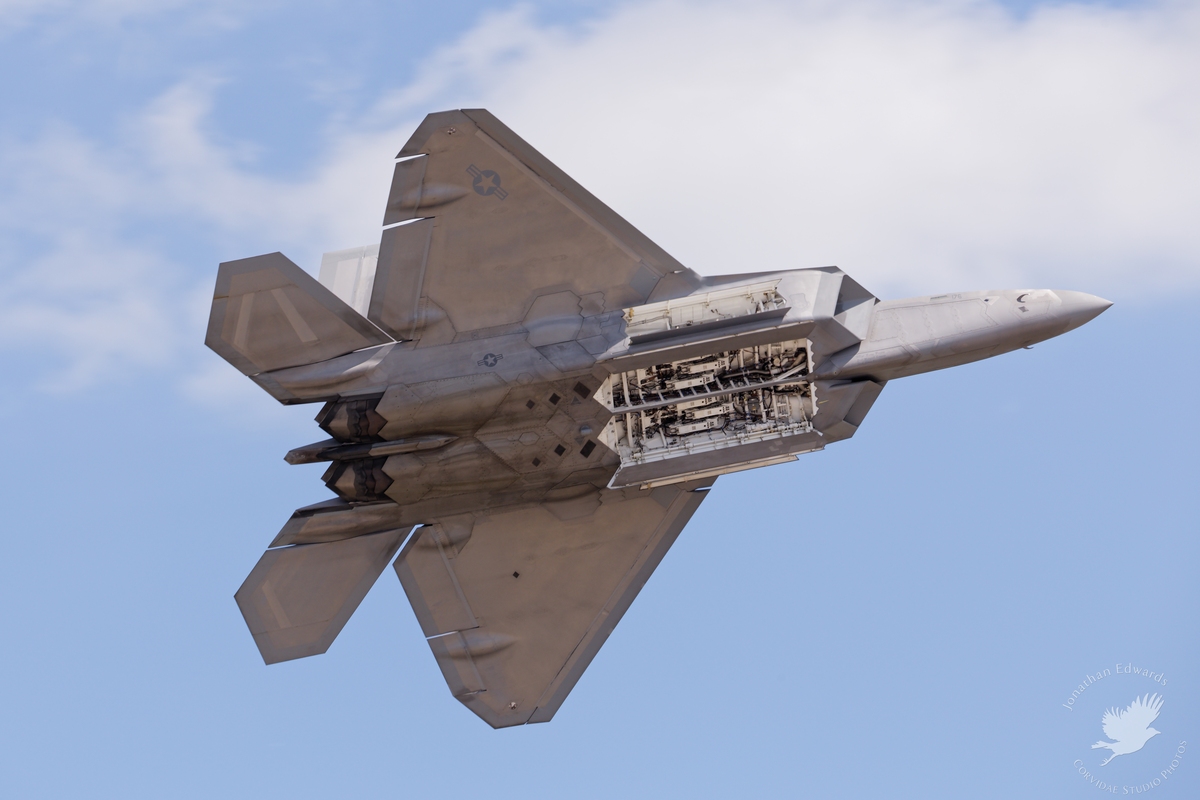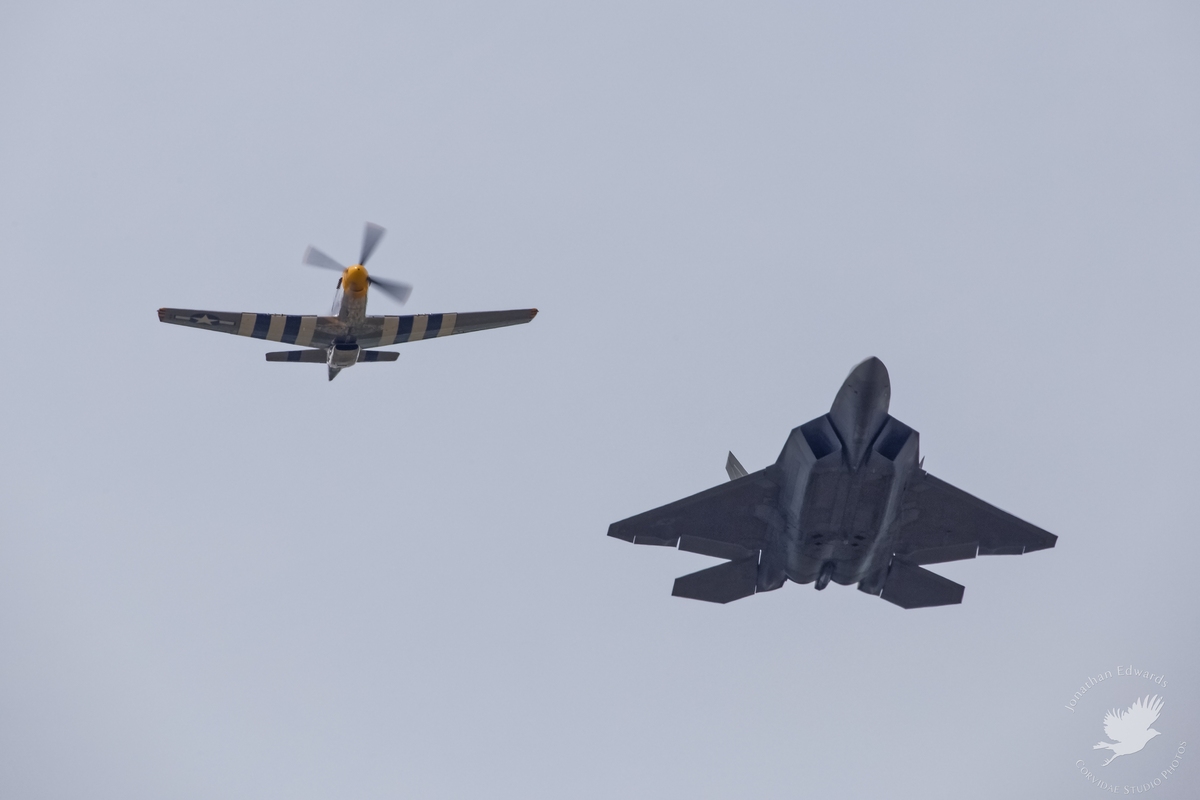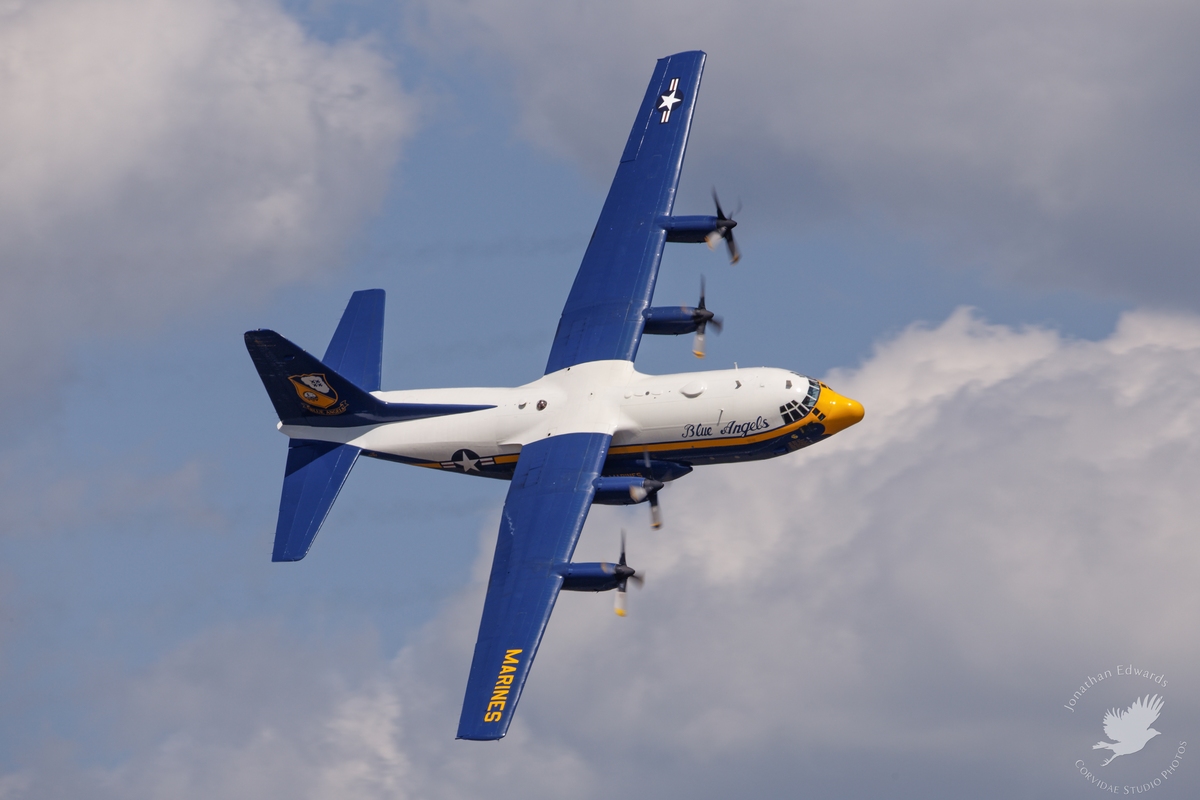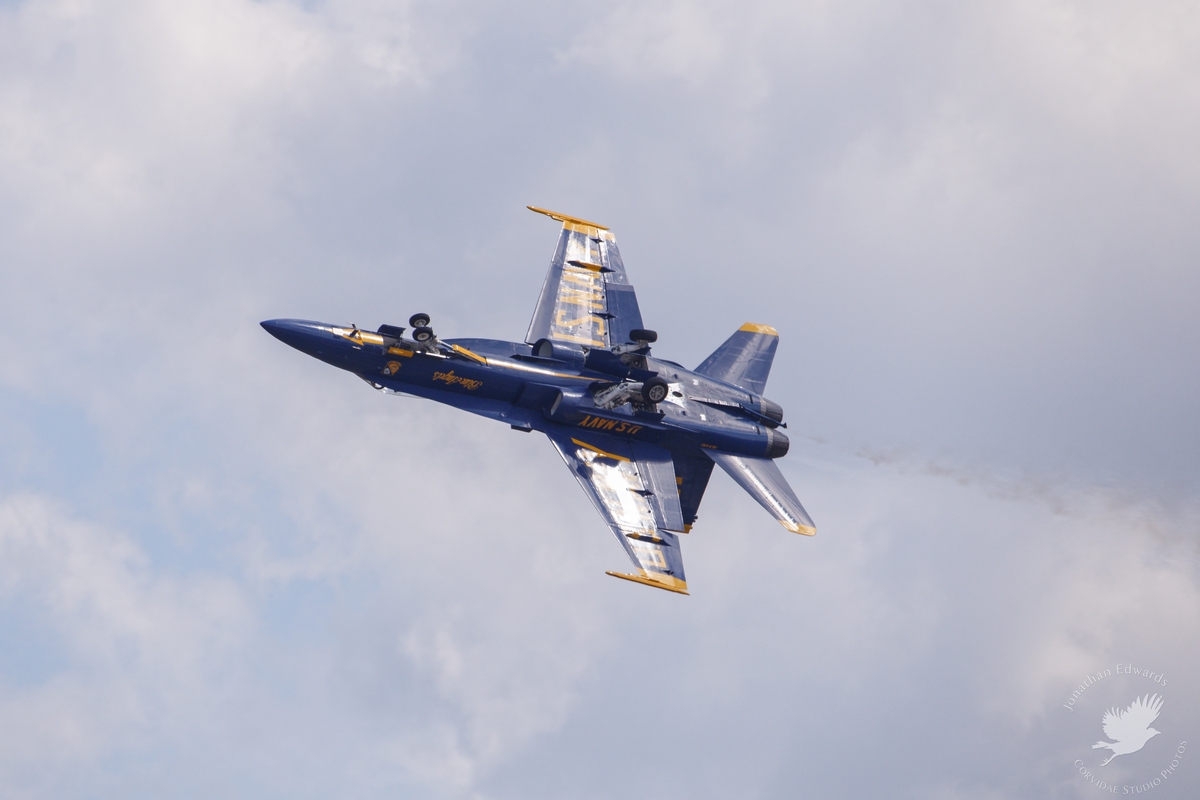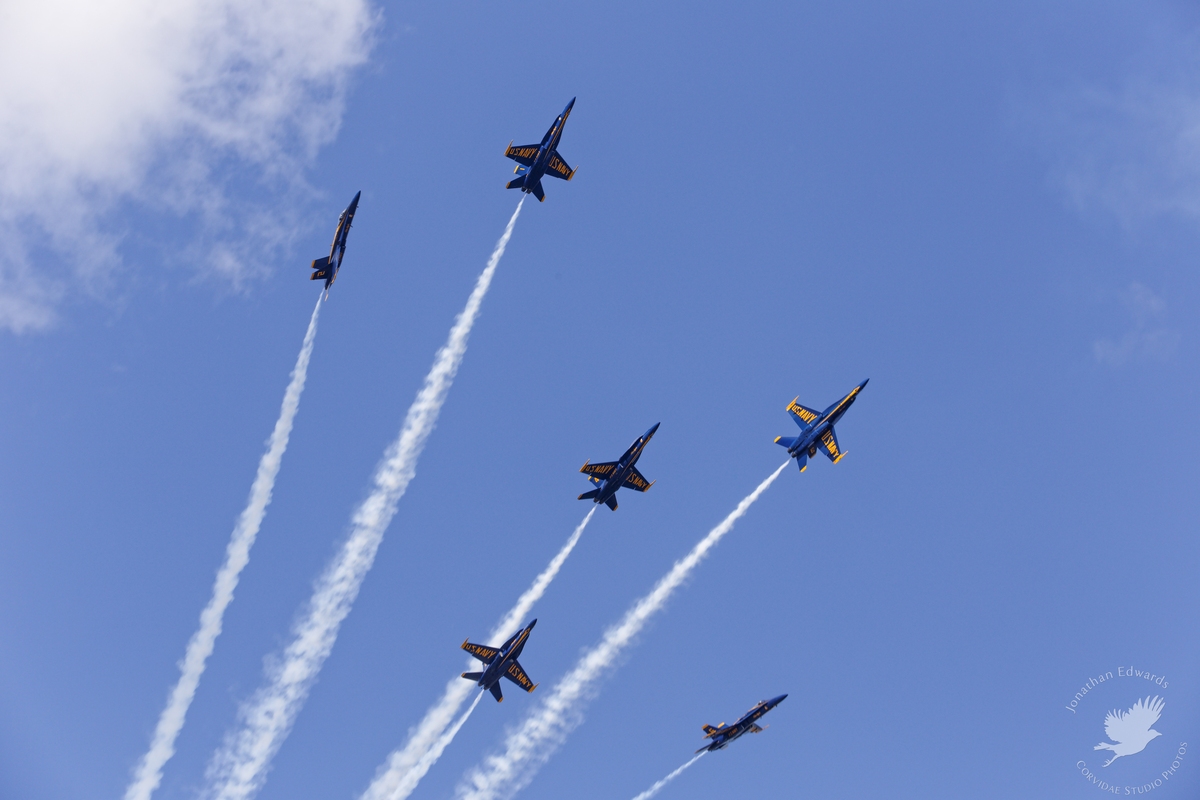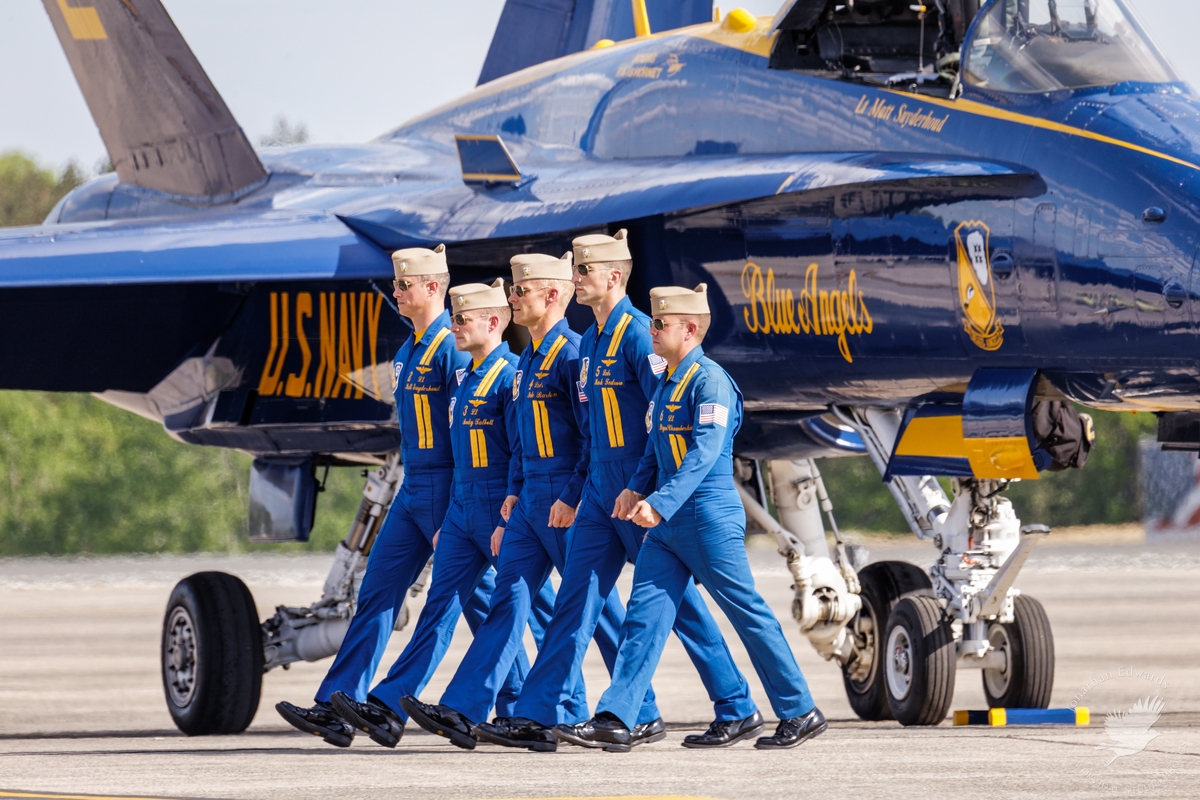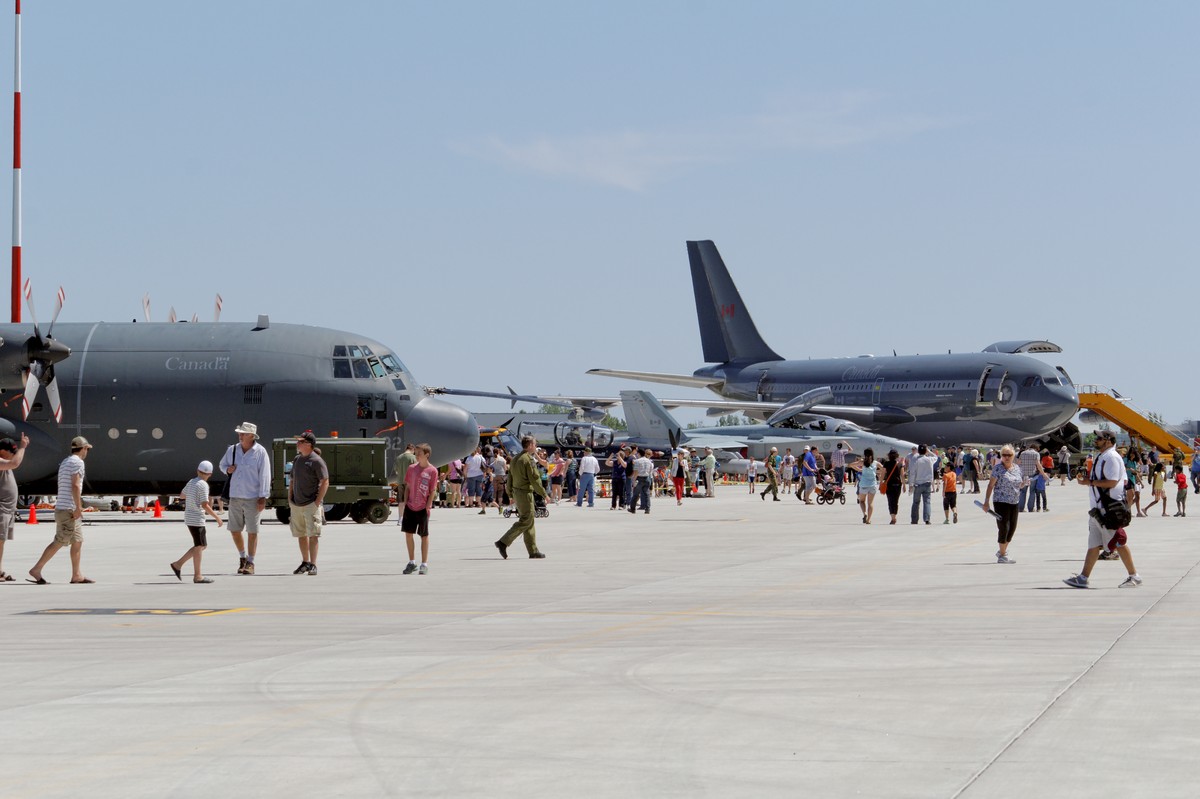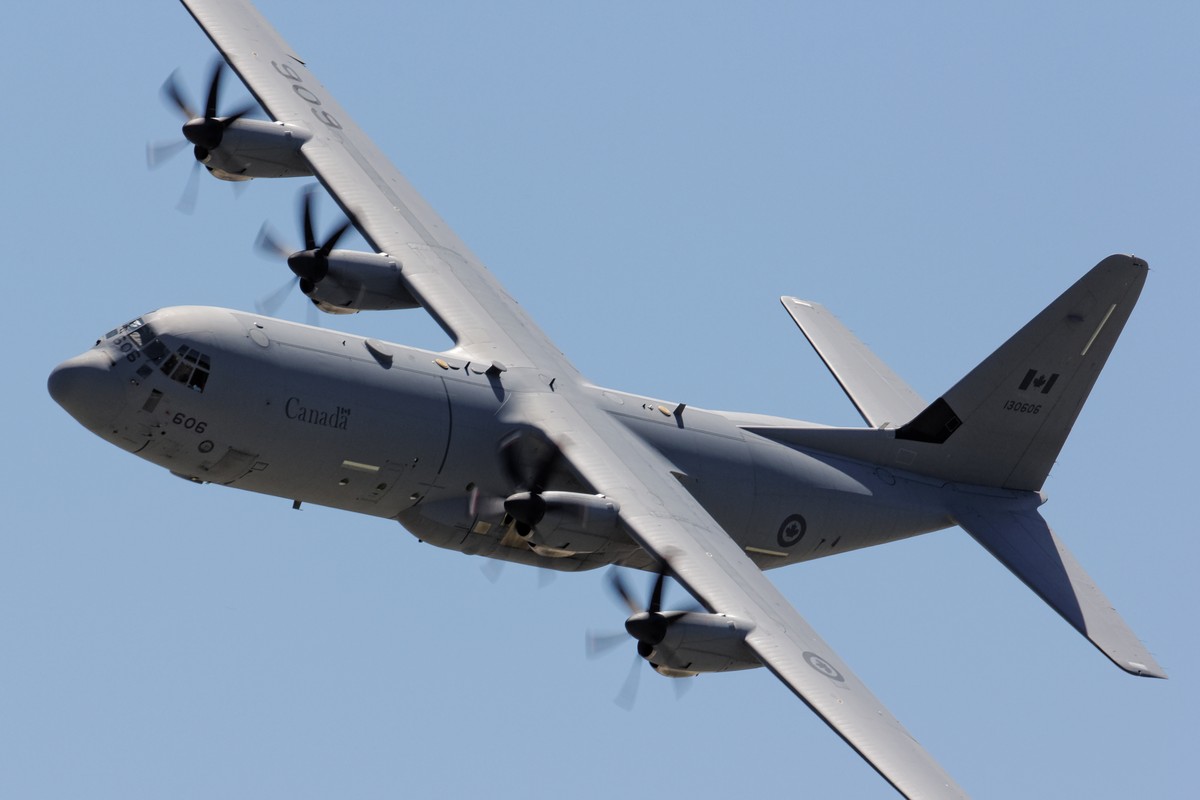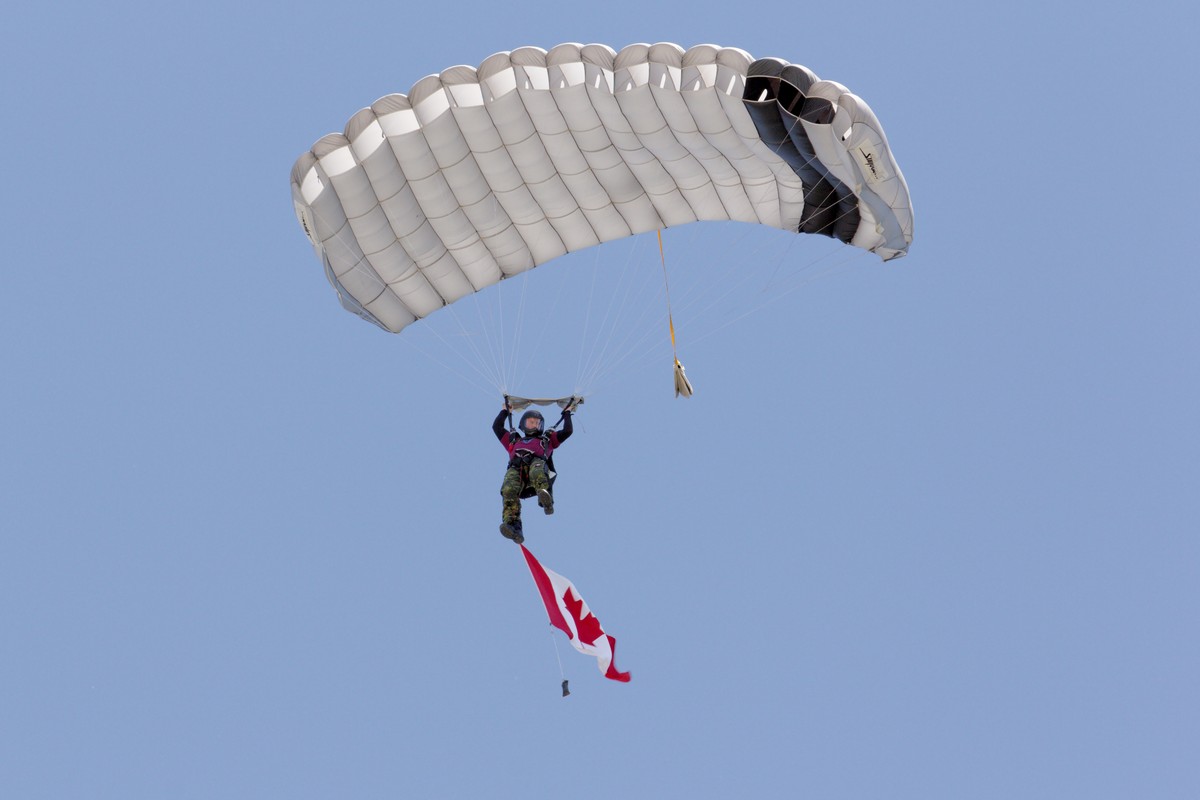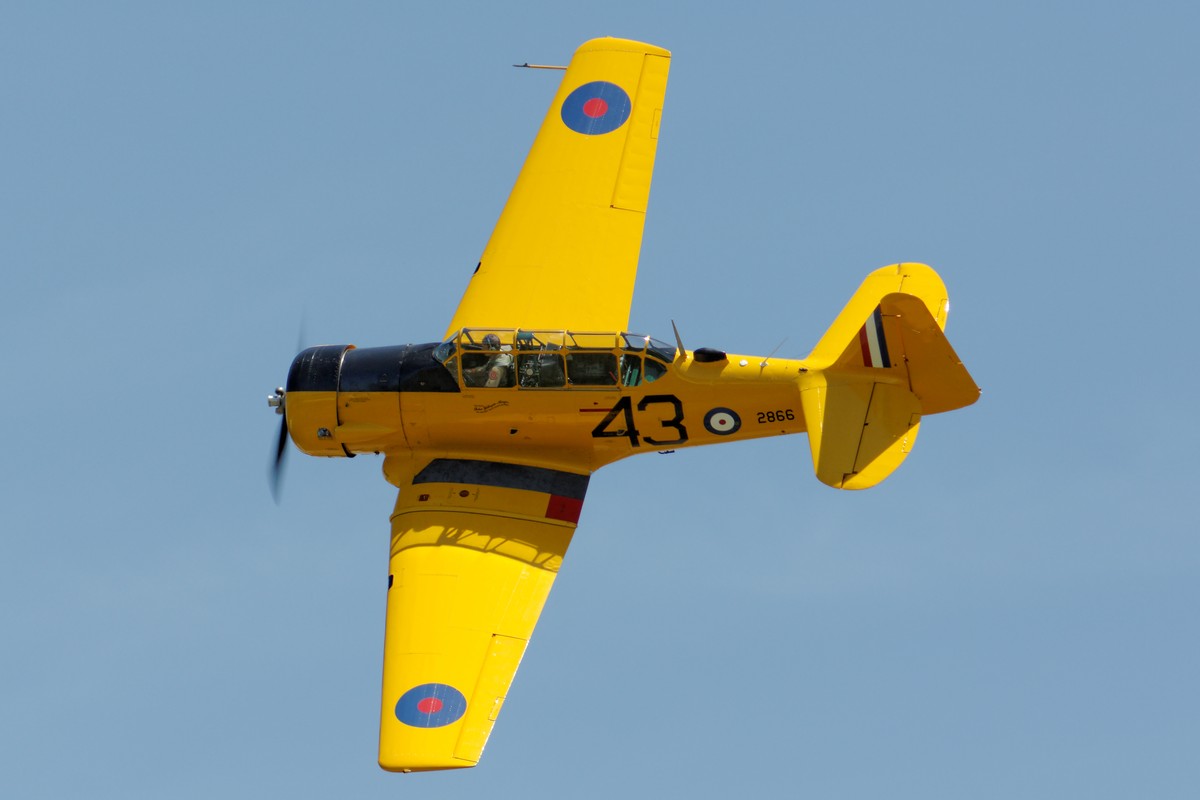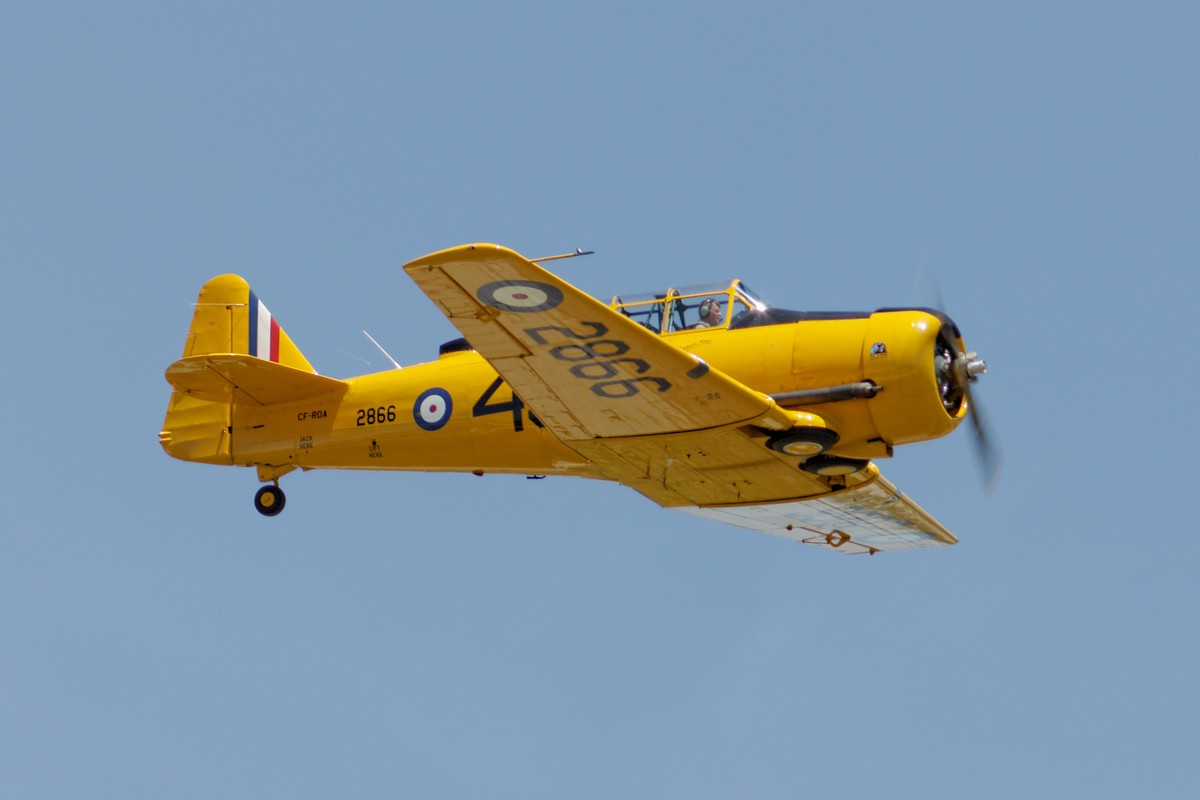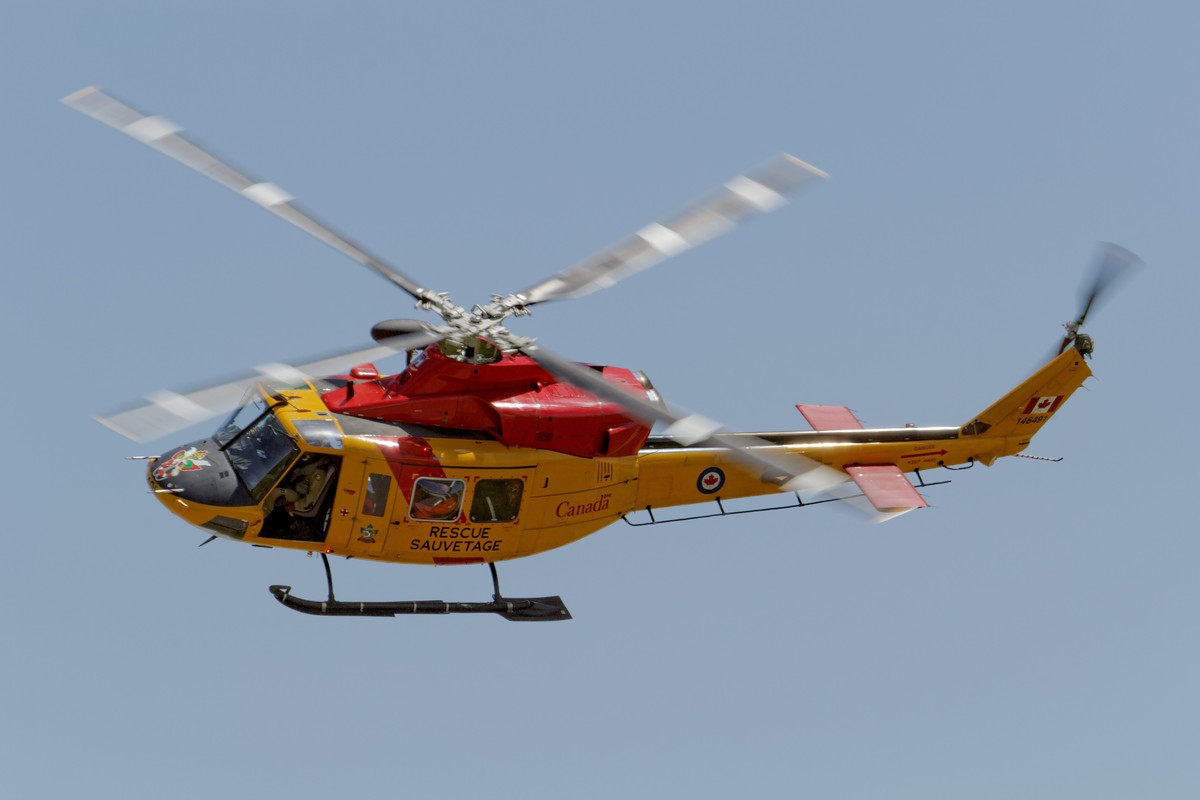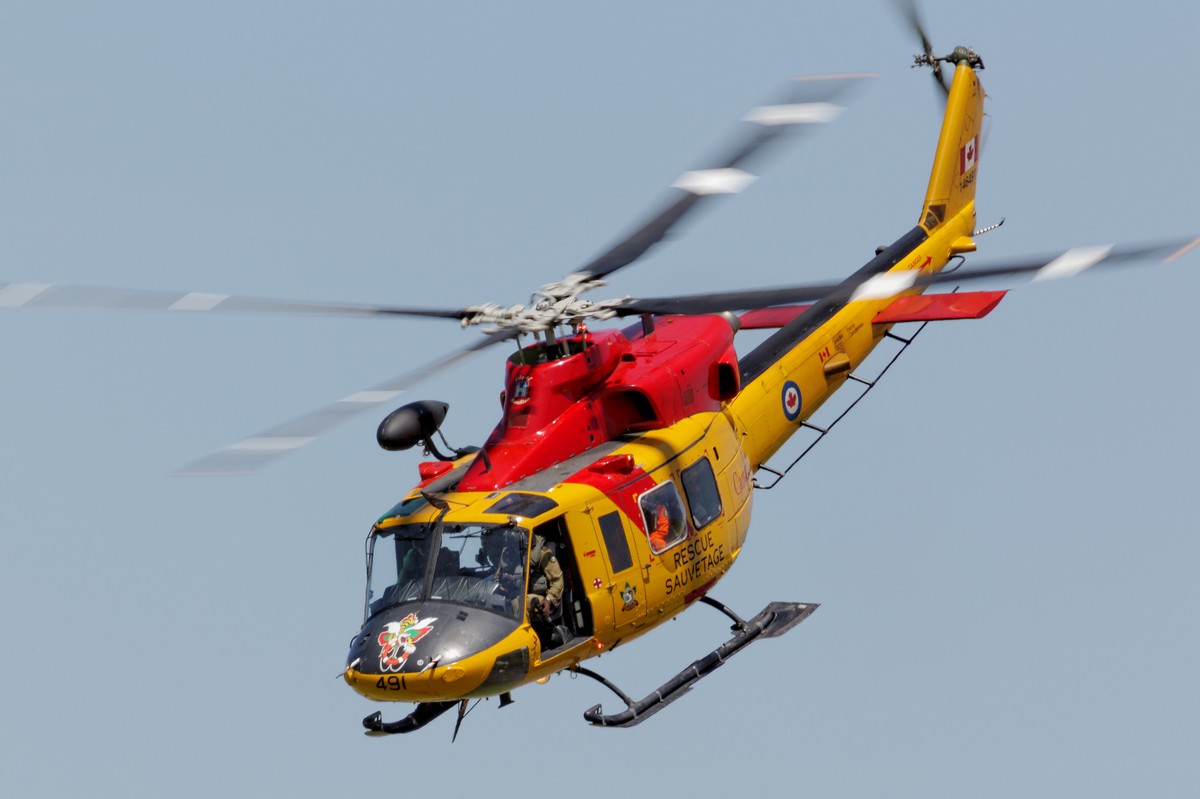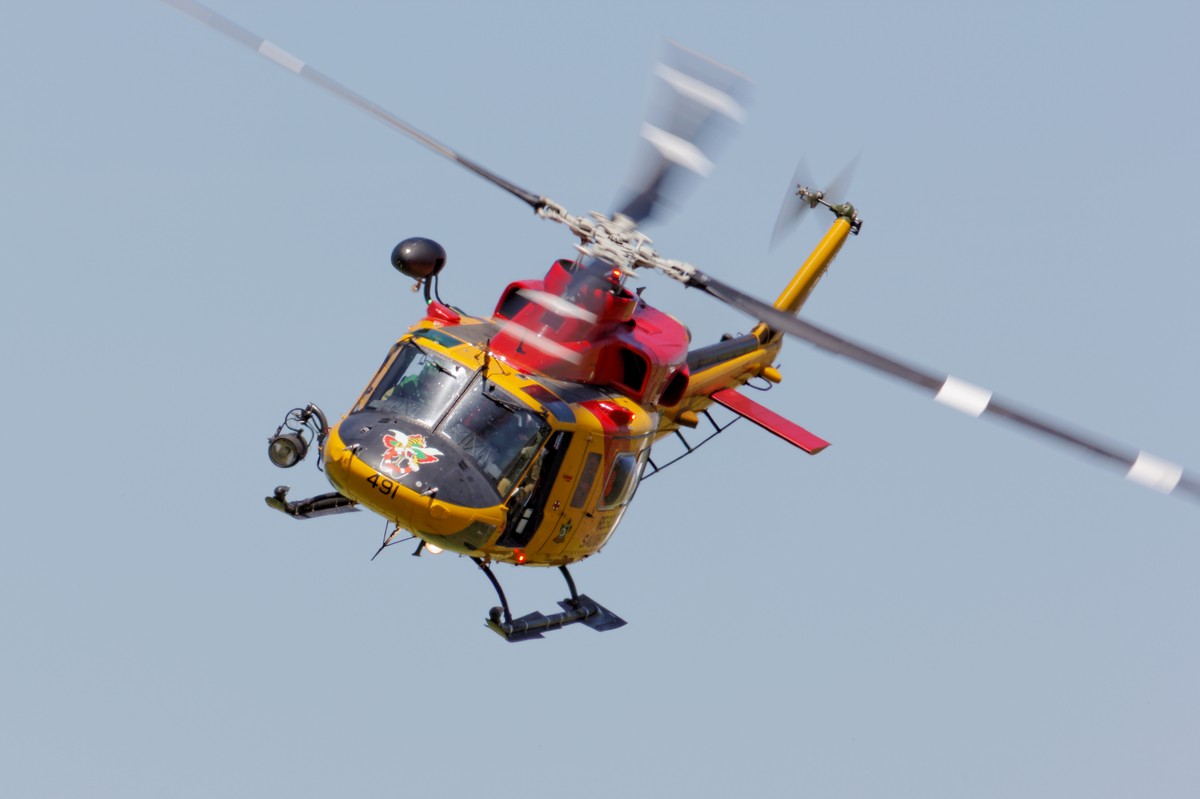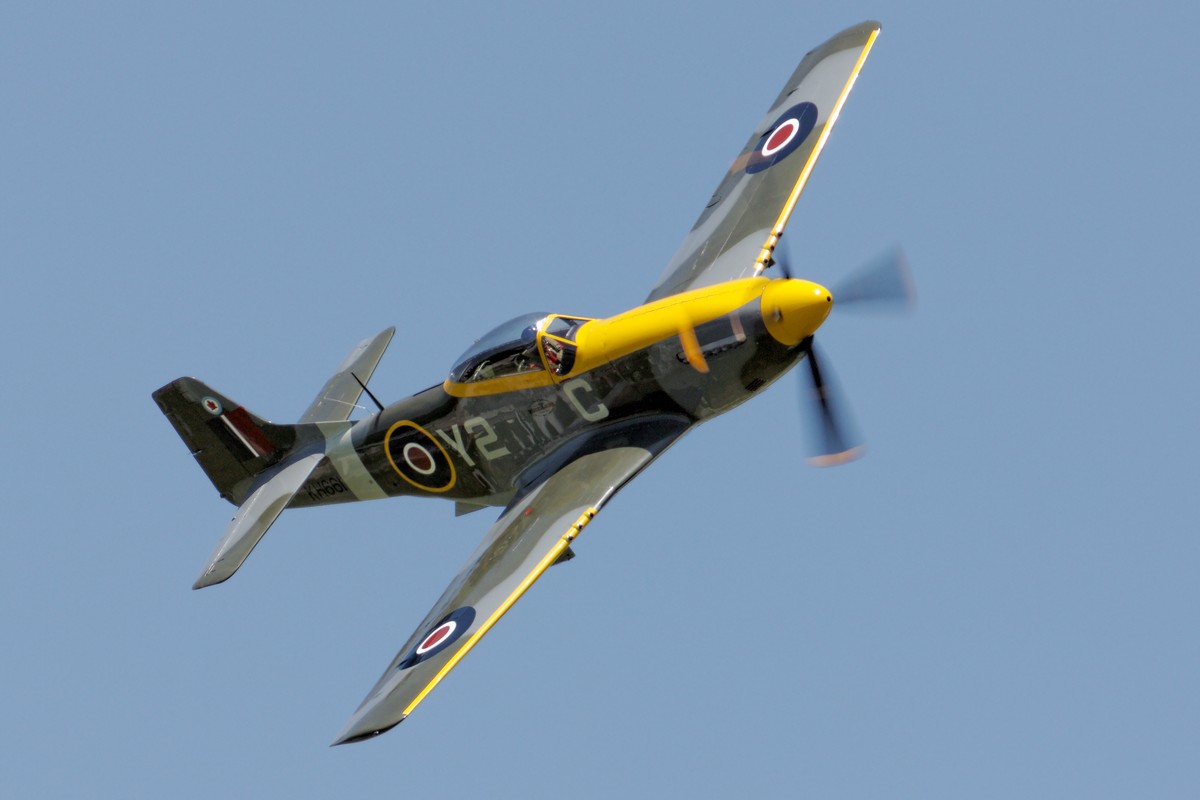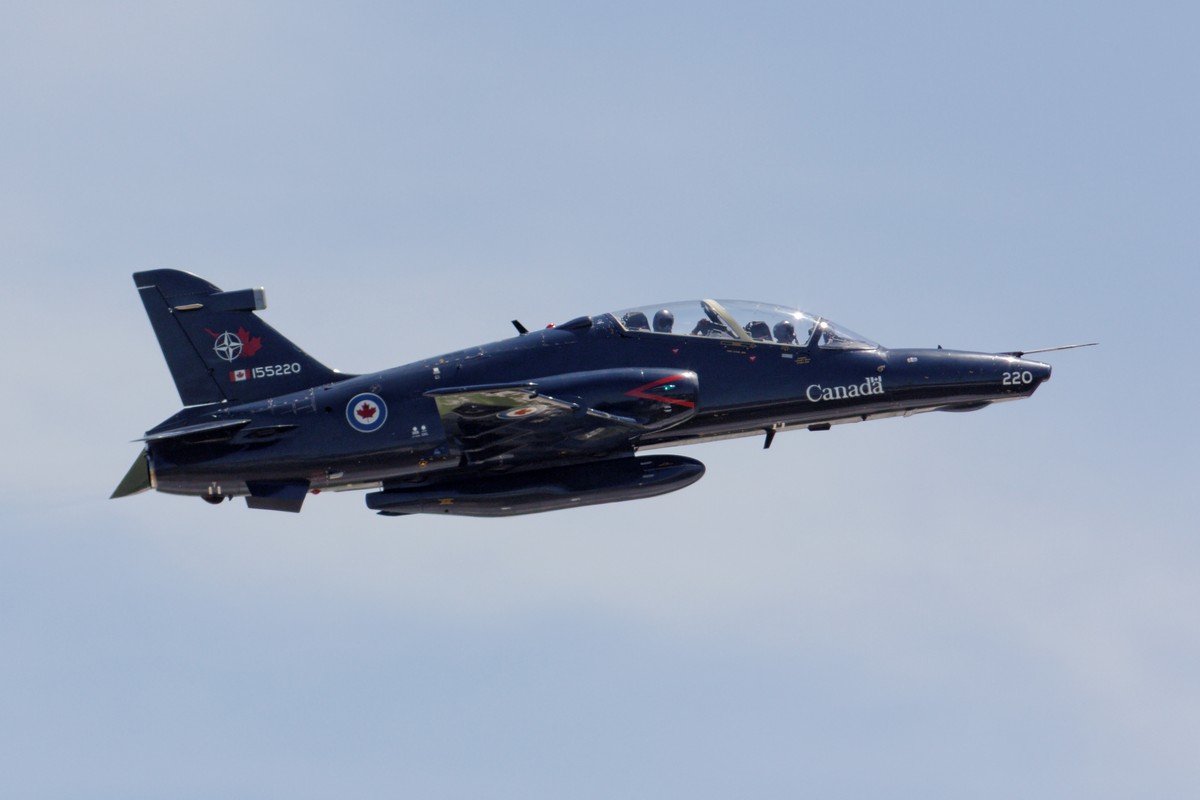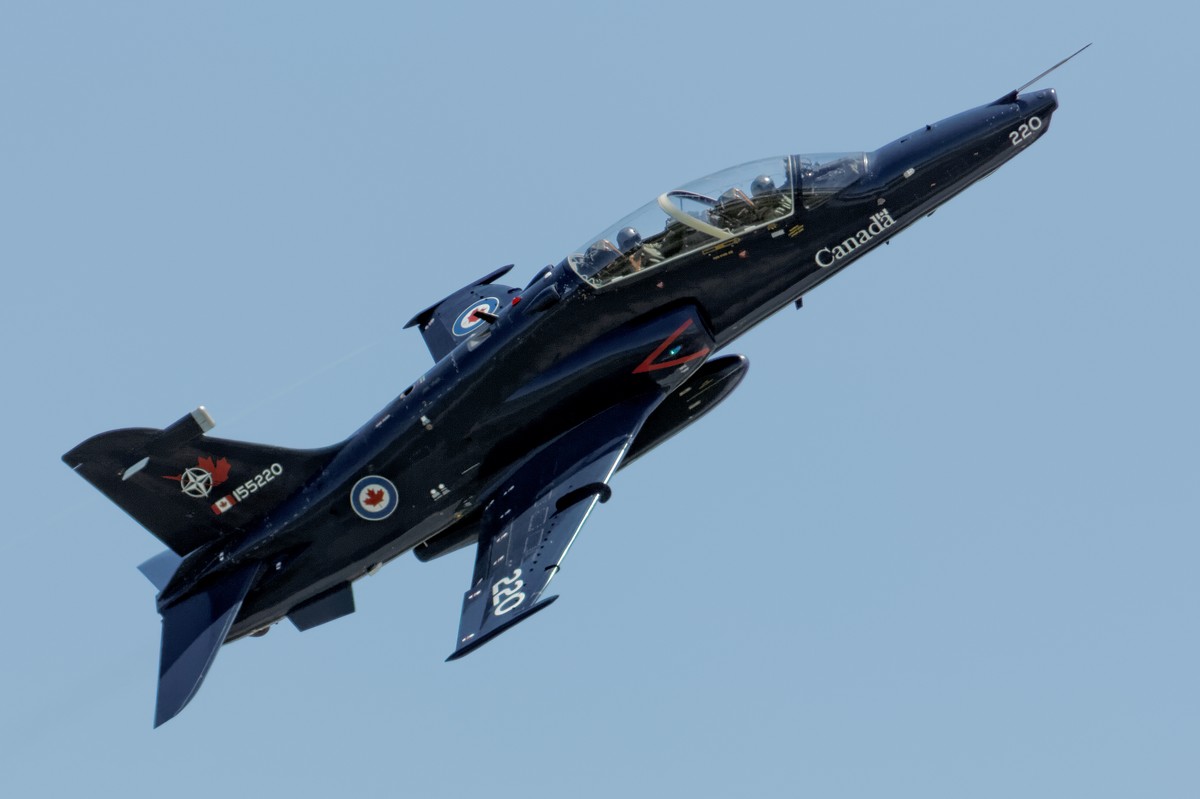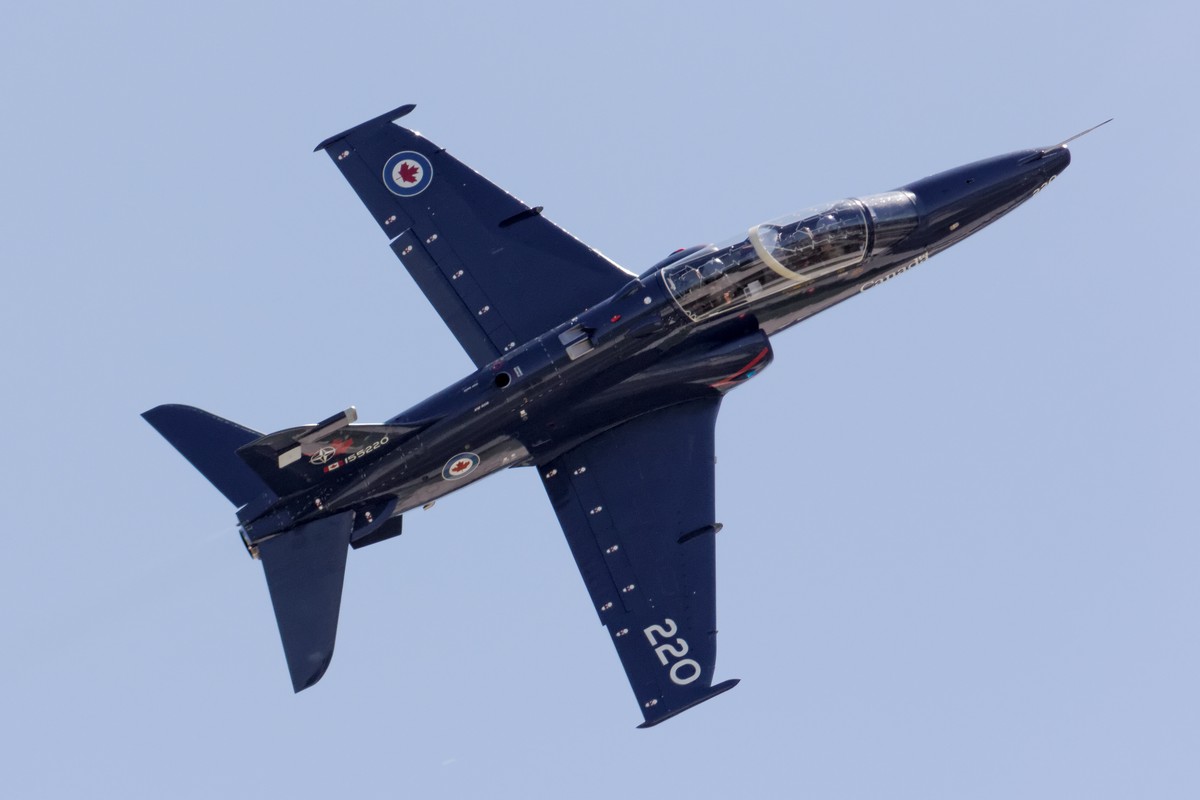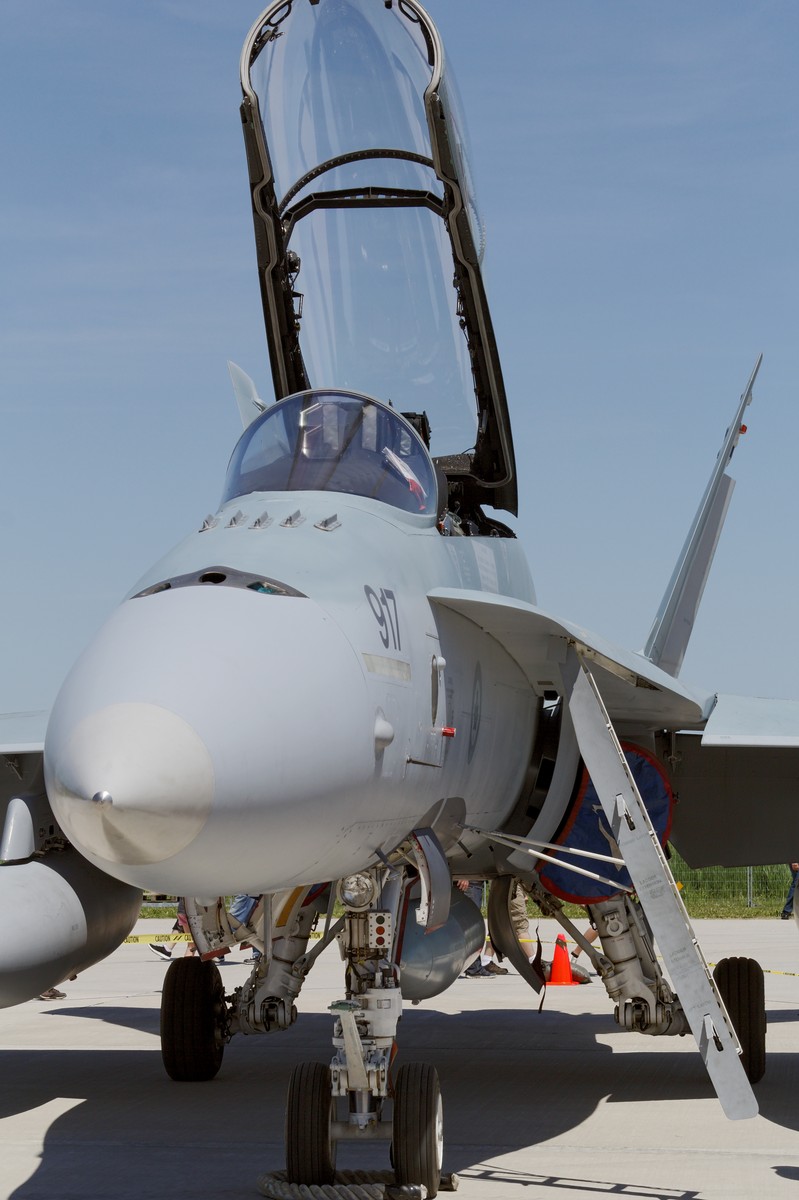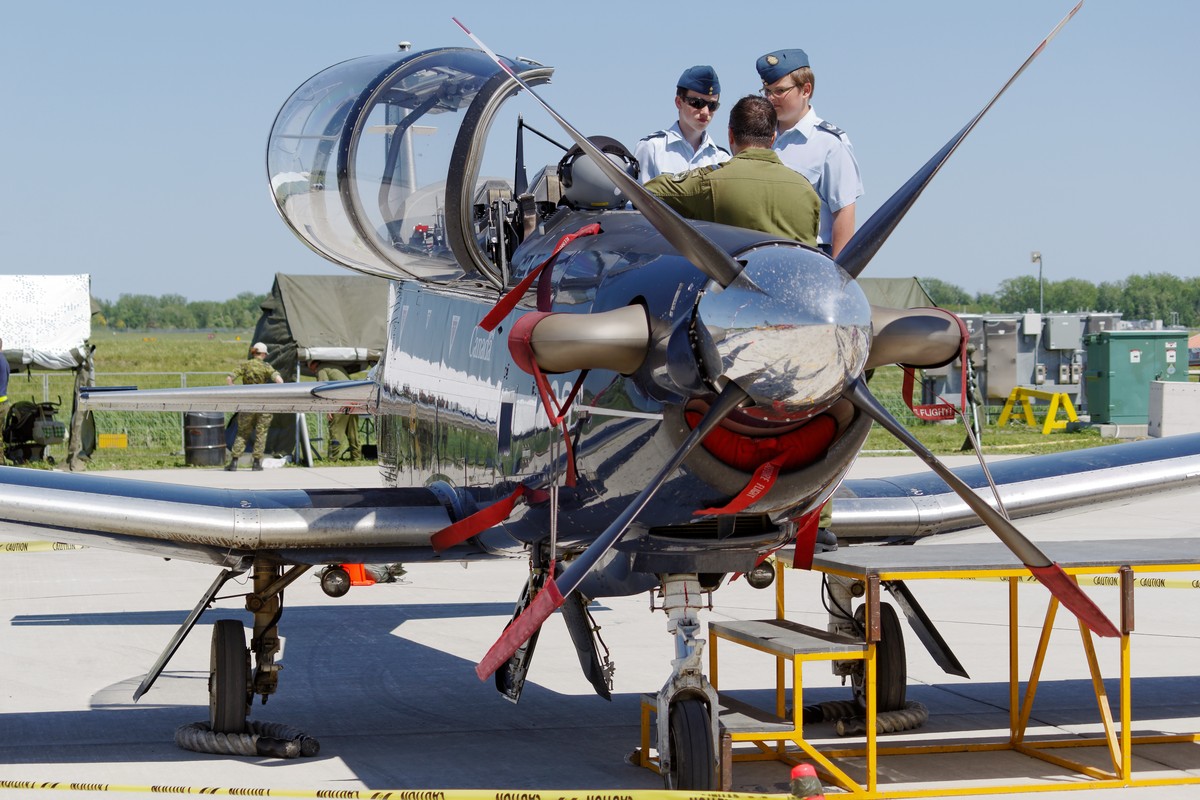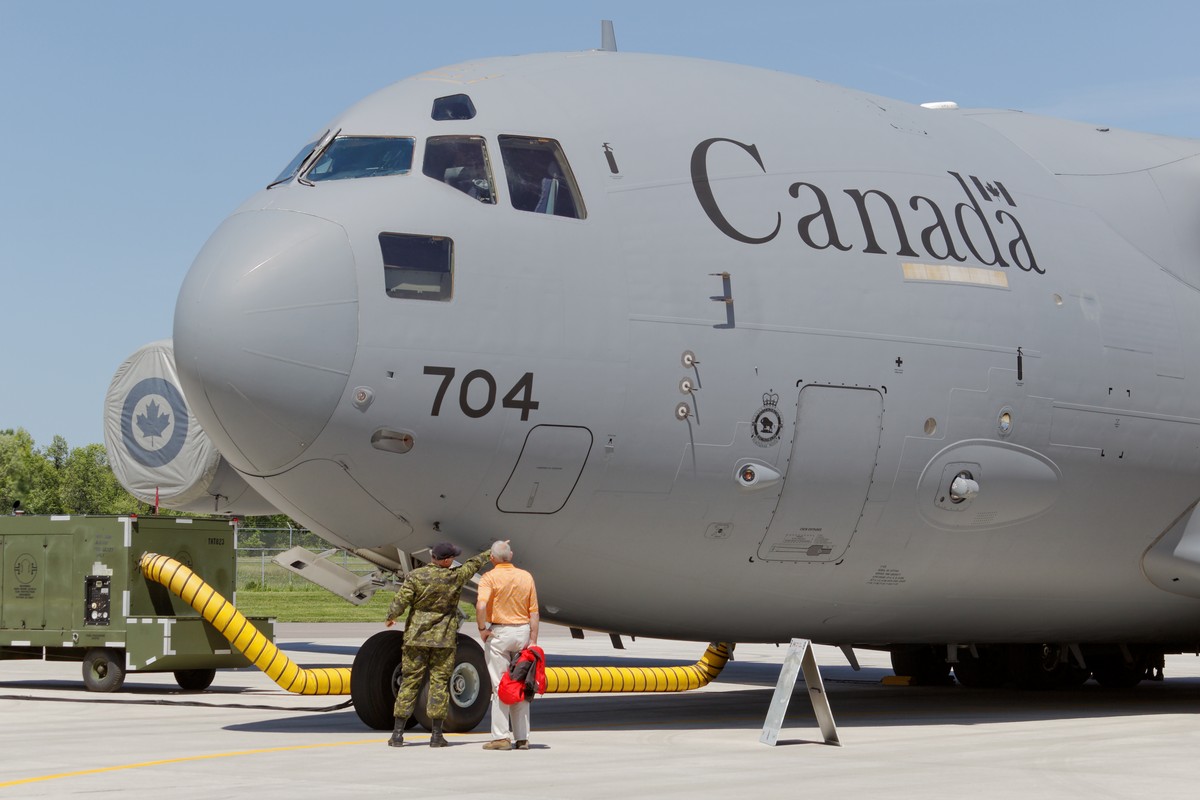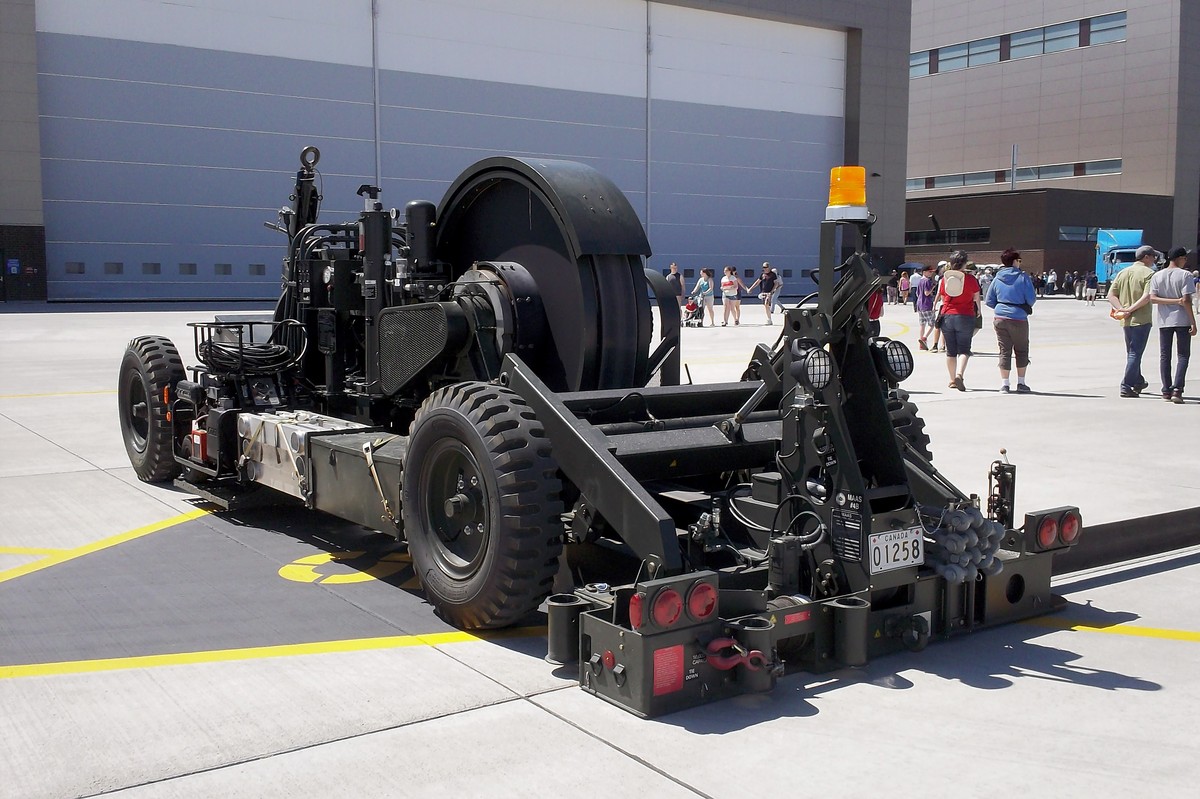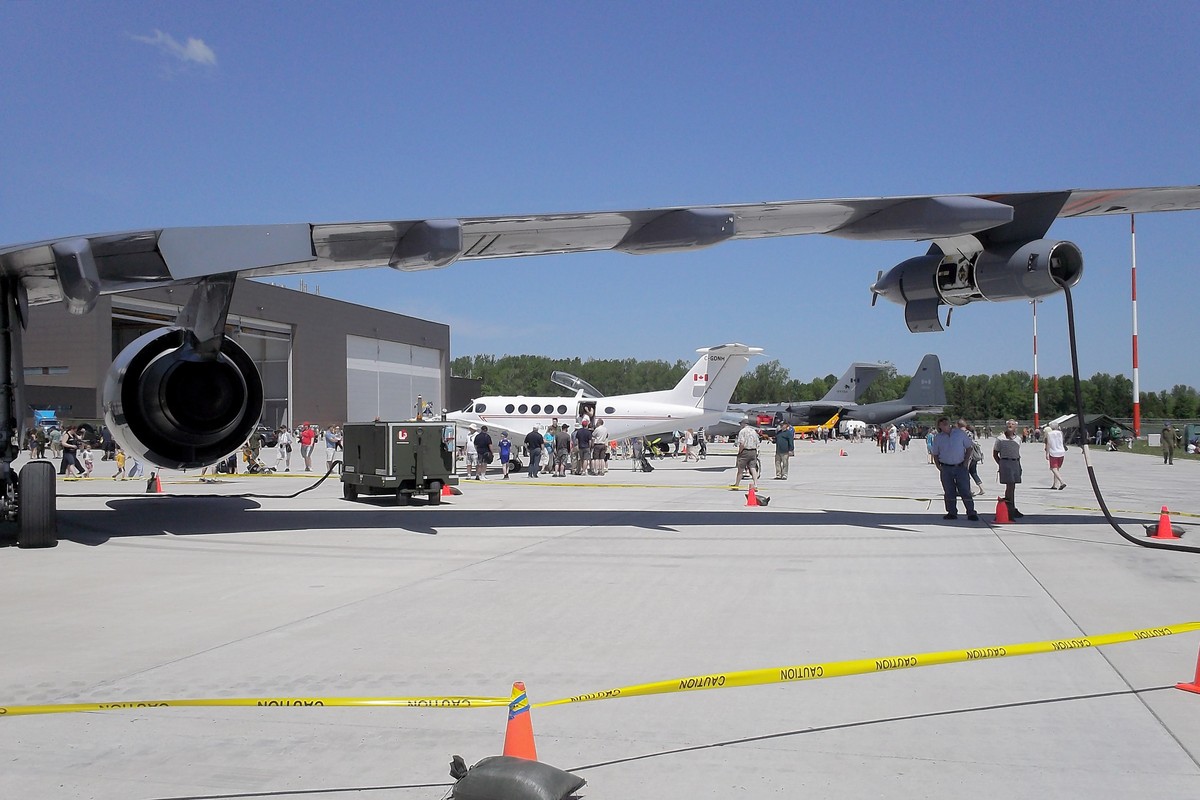Airshow hints and tips
USAF B-1B Lancer at Westover ARB in Massachusetts
With Spring comes the airshow season in North America, beginning generally in Florida and California and peaking with events as far north as Yellowknife and Alaska in mid-summer, and around this time of year I get itchy to get the big lens out and photograph my favourite warbirds and modern demo jets. But like anything, not doing much aviation shooting over the winter makes my skills get a bit dull and I worry about attending the first show I go to and not getting the shots I want. And I do remember starting off with taking photos at airshows only a few years ago and thinking that there had to be more to just pointing the camera and having at it, which of course there is! In this post I'll talk about what to get you consider on the equipment side of photographing airshows, as well as I what I use myself. I'll make a post at a later date which will address other considerations like technique, processing, and generally getting the most out of the airshow experience.
Gear
Lenses - The performance box and show line can be somewhat distant at airshows depending on the location, dependent on airport layout and surrounding areas, so your primary lens should be no shorter in focal length than 300mm. If you can afford a longer lens, by all means go for it, as it may be difficult to fill the frame even at 300mm with a single aircraft demo. Also, a wide angle lens (and go as wide as you can if you like!) is necessary for static displays as well as if you are able to be in an area close to the aircraft as they start up/shutdown, taxiing, etc. Kit lenses are usually fine for this if you're budget restricted, I used an 18-135mm for this purpose for quite a while and you'll most likely not be shooting at big apertures (low f-stops) in full daylight.
Camera bodies - I started off shooting airshows with a Canon SX20IS "bridge" camera which was a great way to learn exposure, and if you don't want to make the plunge into a DSLR system, current bridge cameras are not bad. Drawbacks tend to be slow burst shooting speed (bad for high-speed action), optics are not as good as what you can potentially use with your DSLR, and they have smaller sensors resulting in poorer image quality in less than perfect light. On the upside, they're small and light in a one-size-fits-all package. For DSLR bodies, unless you have a very long telephoto lens (500mm or longer) I recommend using a crop-sensor camera as you will need the reach. Personally, I do find the image quality better in a full frame, but again, be prepared to have the lens to match. For me, the most crucial elements in a good action shooting camera are a good autofocus system (more points the better), and high burst shooting speed. More than anything else, I've missed shots because of both focus issues as well as the camera unable to keep up with the action where things like a transonic vapour cone on a fast jet only happen for a split second and if your camera can't keep up, all you'll see is a bit of vapour before and after it and you'll be kicking yourself for missing it! As for sensor sensitivity, megapixels, etc., I wouldn't worry about it much as pretty much every camera made in the last 5 years will have adequate resolution/image quality for daylight (ie, low ISO) shooting.
Tripods/monopods - For most people this won't be an issue, as most lenses up to a 400mm are quite hand-holdable, and for most activity, hand-holding the lens will be the most convenient and comfortable. I don't recommend using a tripod for airshow shooting as things tend to be so fast that it's more of an impediment. They also take up a lot of space and depending on where you are, it may be blocking someone else's enjoyment of the show. Monopods are quite usable, and very good for assisting in slow shutter speed panning shots, particularly on takeoff/landing, especially with a tilting or gimbal head. However, I find that monopods can be unwieldy when it comes to photographing aerobatics and higher speed passes. Your mileage may definitely vary on this point.
Strap - I'll make a special point of this speaking as someone who has shoulder issues; do invest in a good, comfortable strap for your camera. If you're spending an entire day at an airshow, that camera and lens (or multiple cameras and lenses if you're like me) gets very heavy and you don't need a camera strap digging into your neck and shoulder. The first thing I do with a new camera is ditch the thin leather strap that comes with it and install a wide, padded strap. Also, those OEM straps usually scream to the world what camera you have and how much it's worth, generally not an issue at airshows but in urban areas with high levels of theft, it can be a consideration.
Battery/battery grips - One thing to think about as well with airshow photography is battery life in your camera. Carry lots of spares, or consider getting a grip for your camera which accommodates two batteries at a time. My cameras are all gripped for both extended shooting time, as well as they balance better when using big lenses. If I cover a weekend shooting an airshow, a pair of freshly charged batteries will last the day. For this reason, I don't recommend mirrorless camera systems for airshows, despite their convenient size and generally excellent image quality. Be prepared to carry a lot of spare batteries with you if you do use a mirrorless camera.
Clothing/sunscreen - I can't stress this enough, get a wide-brimmed hat for airshows. Baseball hats will not cover your neck and ears and you will get burned unless you're really keeping up with the sunscreen. Also, UV blocking shirts are a godsend and they also typically are more breathable than t-shirts. Reapply your sunscreen as often as you can. If you are at an airshow where you are on tarmac, you will get burned if you don't use sunscreen regularly.
Camera bags - A note on camera bags; many airshows, especially ones on military bases can have restrictive rules on what you can carry onto a base and sometimes larger backpack style bags are forbidden. Lately I've gotten into the habit of simply carrying my spare batteries, cleaning cloths and what have you in my pockets rather than try to bring my camera bag onto a base with me. Bring a folded plastic bag in your pocket if it looks like it might rain if you're at a show where you can't bring a camera bag. Also, with regard to rules about bags, be prepared to be turned back at the gate. As I've discovered at a couple of military shows, rules posted on their website/social media may not be as they are at the gate. When in doubt, leave it in the car, there's no use arguing with an MP or guardsman about it as they're only doing their job as directed.
My Personal Kit
My usual kit for airshows:
Cameras
Canon EOS 7D Mk II, used as main camera due to its good AF system and high shooting speed (10 frames per second)
Canon EOS 6D, used primarily for static and wide angle lens use. It shoots fairly slowly (4 fps) and has a somewhat primitive AF system with only 11 points, but I have used it in the past as an action camera, with mixed results. For static subjects though it has fantastic image quality.
Both cameras have battery grips
Lenses
Sigma 150-600mm f5-6.3 Sports, a tremendous lens with great image quality. It's also weather sealed. Also tremendously heavy and sits on a monopod most of the time.
Canon 24-105mm f4L, a good lens for walking around for static on full frame, and I'll use it for the occasional formation team wide shot. I keep a UV filter on this lens to protect it, and to keep it weather sealed.
Tamron 15-30mm f2.8 VC, this will be my go-to ultra-wide angle lens for close-up aircraft shots, replacing a Canon 10-22mm that I used to use in this role
Accessories/supports/etc.
Benro monopod with Jobu Jr. gimbal, used for the Sigma 150-600mm
Browning Flex Grip rifle sling adapted to fit the grommets on the Sigma 150-600mm *I keep a sling on this lens in case either the monopod loses footing or if I'm using it handheld. The rifle sling has far better padding than any camera strap I've been able to find.
Blackrapid Sling Strap on the 6D
Lenspen or two (I tend to drop them)
Cereal bars, sunscreen, bug spray (especially at Geneseo!), and lots of water
Ann's Gear
Ann usually carries her Canon EOS 60D and 300mm f4L IS, sometimes used with a 1.4x Extender III and occasionally a Manfrotto monopod and tilt head. This was my primary setup until I got the Sigma 150-600mm Sports.
Stuff I've used in the past...
Canon EOS 60D - traded in after 80k clicks or so for the 7D Mk II
Canon 55-250mm IS, 18-55mm IS, 18-135mm IS kit lenses - a note on the 55-250mm, despite the slightly short reach, it is a great value. Fairly sharp, very light, and very versatile. Also, the 18-135mm was also a good value.
Sigma 150-500mm DG OS lens - a decent lens, but nowhere near as good as the 150-600mm Sports. Very soft from 400-500mm, and also not very sharp until stopped down to f9.
Tokina 70-210mm f3.5 lens - a very old Pentax K mount lens adapted to Canon mount, an interesting full manual lens that I got me a few ok photos. Full manual exposure and manual focus is a real challenge!
